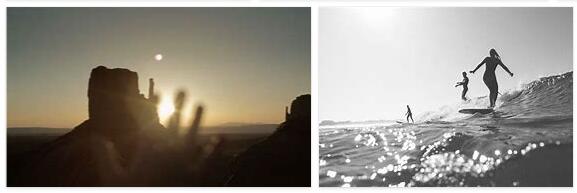A series of favorable occasions allowed the advent of a new wave of directors. In 1961 António da Cunha Telles organized the first cinema course in Lisbon. The intention was to train a new generation of technicians, astutely taking advantage of the contradictory political openness shown by the FCN. But the most important event was the creation in 1962 of the Produções Cunha Telles, which began their activity with a low-cost Franco-Lusitanian co-production, Vacances portugaises (1963; Sexual anthology) by Pierre Kast. More than the simple testing of an alternative production system, this film represented for Cunha Telles and the nascent movement the beginning of an adhesion to European cinematic ferment, and the stimulus to make a Portuguese film with the same methods. Back from their internships abroad, young directors such as Paulo Rocha and Fernando Lopes soon joined in the enthusiasm of Cunha Telles.The first sign of this renewal came with Os verdes anos (1963) by Rocha and Belarmino (1964) by Lopes, in which the former boxing champion Belarmino Fragoso tells his life: two films in which the break with the artificiality of the previous cinema is total, and which placed themselves on the cinema side of anguish and frustration, becoming metaphors of the pain of a small country closed in fascism and poverty. However, the new directors did not meet the consent of the public, who turned their backs on national cinema: thus began a relationship based on mutual indifference, even if the new cinema found consensus in foreign critics and collected prizes in various festivals, resulting in line with the contemporary European experiences of linguistic renewal. With Acto de primavera (1963) Oliveira stood on the border between fiction and documentary, and immediately afterwards made – for the first and only time with the support of the FCN – the violent and disturbing medium-length film A caça (1964): two capital works for the work of denaturalization of reality carried out by Oliveira’s cinema, and which greatly influenced the new generation of filmmakers.
In 1967, with António de Macedo’s Sete balas para Selma, the Produções Cunha Telles closed. Portuguese cinema found itself starting from scratch again. To save him, this time, was the Fundação Calouste Gulbenkian (one of the largest private foundations in the world), who agreed to participate for three years in financing the Centro Português de Cinema (CPC), an autonomous cooperative made up of eighteen directors. The CPC only started operations in 1970 due to obstacles to its legalization by the government, which was attempting to create a new public body, the Instituto Português de Cinema (IPC), financed by a 15% tax on tickets.. The IPC was born in 1973. Between the failure of the Produções Cunha Telles and the establishment of the CPC (a period that coincided with the last phase of Caetano’s dictatorship) some new directors made their debut: José Fonseca and Costa, with Era o vento… eo mar – Sesimbra (1966) and A metafísica do chocolate (1967); two of the most important and controversial critics of the time, Alberto Seixas Santos, with A arte e ofício de ourives (1968) and António Pedro Vasconcelos, with Tapeçaria – Tradição que revive (1968); Fernando Matos Silva, assistant director in the early films of Rocha and Lopes, with Por um fio… (1968); former cinematographer Manuel Costa e Silva, with A grande roda (1970). Cunha Telles achieved considerable commercial success with her first feature film O cerco (1970). In 1970 Gulbenkian launched her first production plan, which included, among other things: Quem espera por sapatos de defunto morre descalço (1970) by João César Monteiro, the most irreverent critic of the time, who would become one of the most nonconformist directors of the European cinema; the documentary Vilarinho das Furnas (1971) by António Campos; Pedro só (1972) by Alfredo Tropa; O recado (1971) by José Fonseca and Costa, in which the silent anger and the strongly repressive climate of those years shines through; O passado eo presente (1972; Past and present) directed by Oliveira, who constituted the first chapter of his ‘tetralogy of frustrated loves’. It was the beginning of the so-called Gulbenkian years, characterized by a production that was accused of being elitist.
The creation of a non-commercial cinema was made possible precisely by the state of absolute decision-making freedom enjoyed by the members of the CPC, who could independently manage Gulbenkian’s money for films of major artistic interest. Particular attention deserves the solitary work of the documentary maker Campos, who had made his debut with O rio Liz (1957), which was followed by other short films such as Um tesouro (1958), from the short story by L. Botas; O senhor (1959), from the story by M. Torga; A almadraba atuneira (1961), one of the most beautiful documentaries of all Portuguese cinema, in which the last slaughter of tuna is told in a village in the South of the Portugal; A invenção do amor (1965), of surrealist inspiration. He already had thirty titles behind him when he made his first feature film, Vilarinho das Furnas. Set in a village destined to disappear under the waters of a power plant, before an anthropological documentary is the political portrait and the metaphor of the sinking of an entire country. The other two great films of this period were Pousada das chagas (1971) by Rocha and Uma abelha na chuva (1972) by Lopes, not made with grants from the CPC. Pousada das chagas represented the explicit declaration of the aesthetics of Rocha’s visual forms (color, light, acting, gestures) and the influence of Japanese culture on his work. Uma abelha na chuva, based on the novel by C. de Oliveira, translated the universe of literary emotions into filmic images in an extraordinary way. In 1972, the second production plan of the CPC was approved, announcing the launch of a series of films, including: A ilha dos amores by Rocha, one of the most troubled projects in the history of Portuguese cinema that was finally made only ten years later from other manufacturers; O mal-amado by Matos Silva, which, made in 1972, was blocked by censorship for its strong charge of social criticism and only came out after 25 April 1974; Brandos costumes by Seixas Santos, shot in 1974 and screened only in 1975, which tackles the discourse on the regime in an intransigent manner and constitutes one of the most decisive attacks launched by Portuguese cinema on Salazarism; Jaime (1974) by the poet António Reis, documentary on the pictorial universe by J. Fernandes. For Portugal 2014, please check thesciencetutor.org.
On the eve of the revolution, the foundations had been laid for the development of an auteur cinematography strongly independent of the laws of the market, recognized by the most authoritative international critics. Gulbenkian did not fail to intervene in the realization of another important project: the creation, in 1972, of the Escola Superior de Cinema do Conservatório Nacional in Lisbon, directed by Seixas Santos. On the eve of the revolution, the foundations had been laid for the development of an auteur cinematography strongly independent from the laws of the market, recognized by the most authoritative international critics. Gulbenkian did not fail to intervene in the realization of another important project: the creation, in 1972, of the Escola Superior de Cinema do Conservatório Nacional in Lisbon, directed by Seixas Santos. On the eve of the revolution, the foundations had been laid for the development of an auteur cinematography strongly independent of the laws of the market, recognized by the most authoritative international critics. Gulbenkian did not fail to intervene in the realization of another important project: the creation, in 1972, of the Escola Superior de Cinema do Conservatório Nacional in Lisbon, directed by Seixas Santos.








